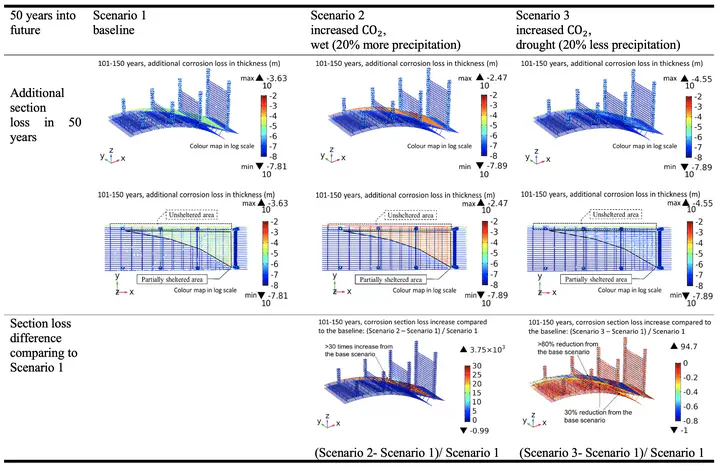A 3-D transport model for assessing the impact of microclimate change on the corrosion performance of a bridge subjected to carbonation and chloride attack

Abstract
This study explored the corrosion of reinforcement in an old arch bridge under carbonation and chloride attack using a large-scale 3-D transport model. It incorporated a realistic microclimate representation around the bridge in terms of temperature, relative humidity, and precipitation. The model simulated critical microenvironment factors such as moisture, chloride concentration, and carbonation at the rebar depth. The corrosion rate was predicted considering the synergistic effect of carbonation and chlorides derived from site-extracted pore solutions and historical rebar. Field data from in-situ sensors measuring oxygen content, moisture, chloride, and carbonation in the concrete cover informed our analysis. Significantly, the field measurements ruled out the possibility of a limited cathodic current due to oxygen transport. The study found that the ineffective sheltering from rain or rainwater retention in some parts of the arch facilitated the chloride and carbonation penetration, leading to higher corrosion rates in those parts. The simulation results for the past 100 years of service agreed well with the current condition of the bridge and the projections for the next 50 years indicated a significantly increased corrosion over a larger area of the arch. Increased CO2 levels and precipitation substantially raised rebar section loss, intensifying overall corrosion. In contrast, higher CO2 levels with less precipitation reduced the maximum rebar section loss but did not affect overall corrosion. These findings suggested the need for varied infrastructure maintenance and management strategies.